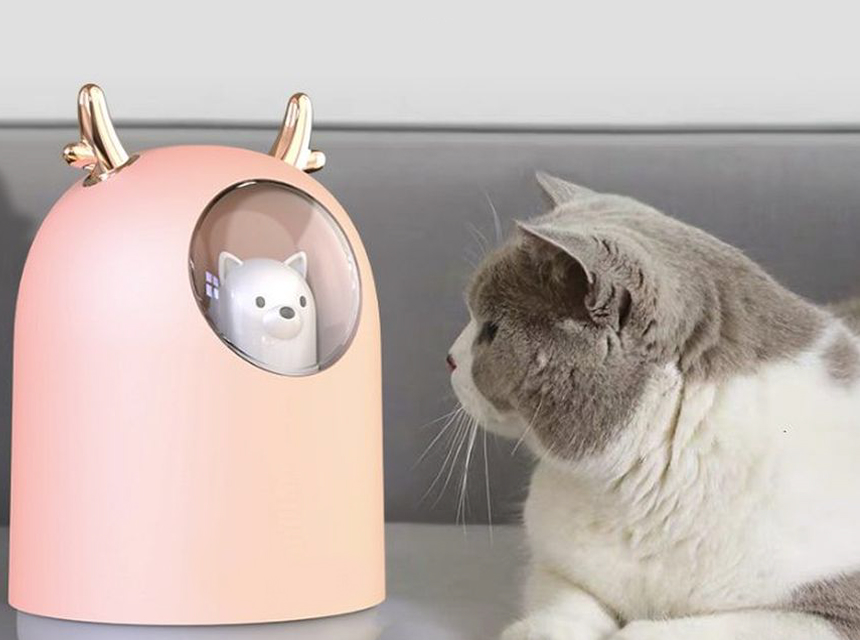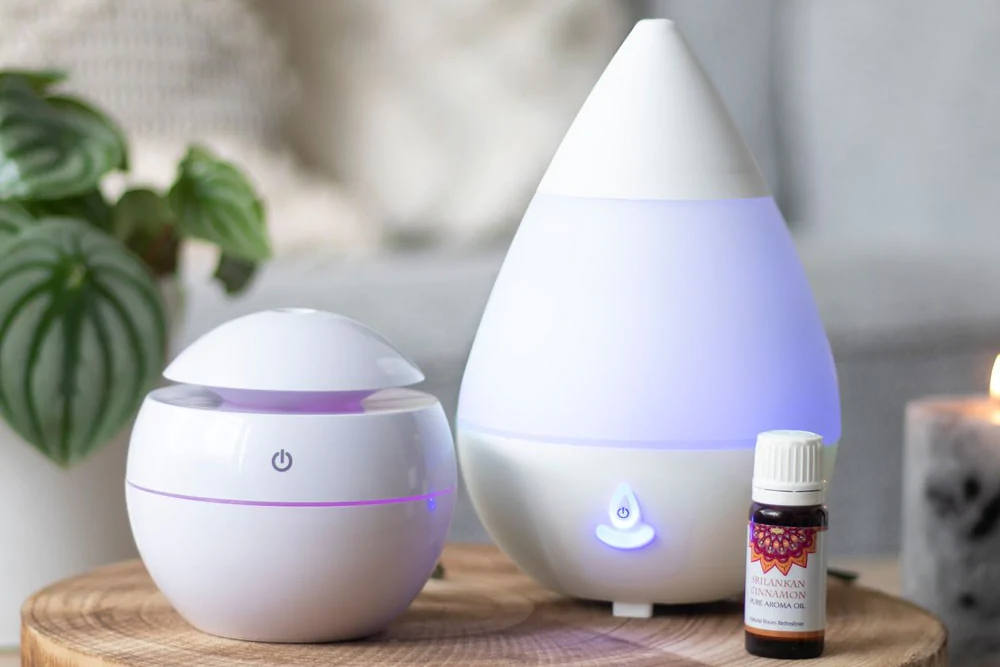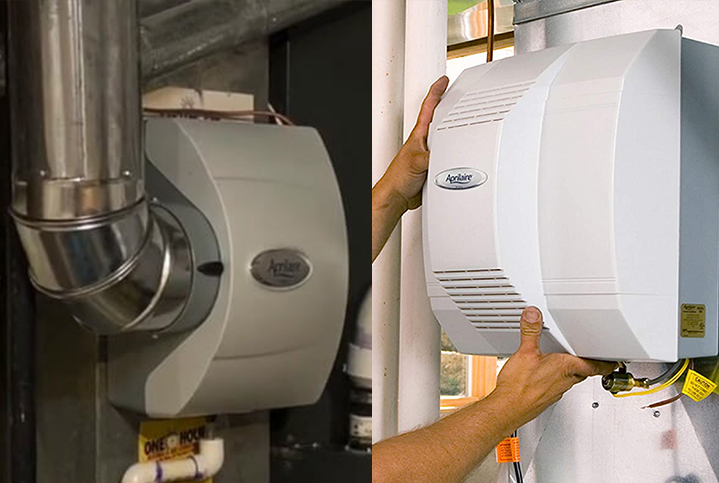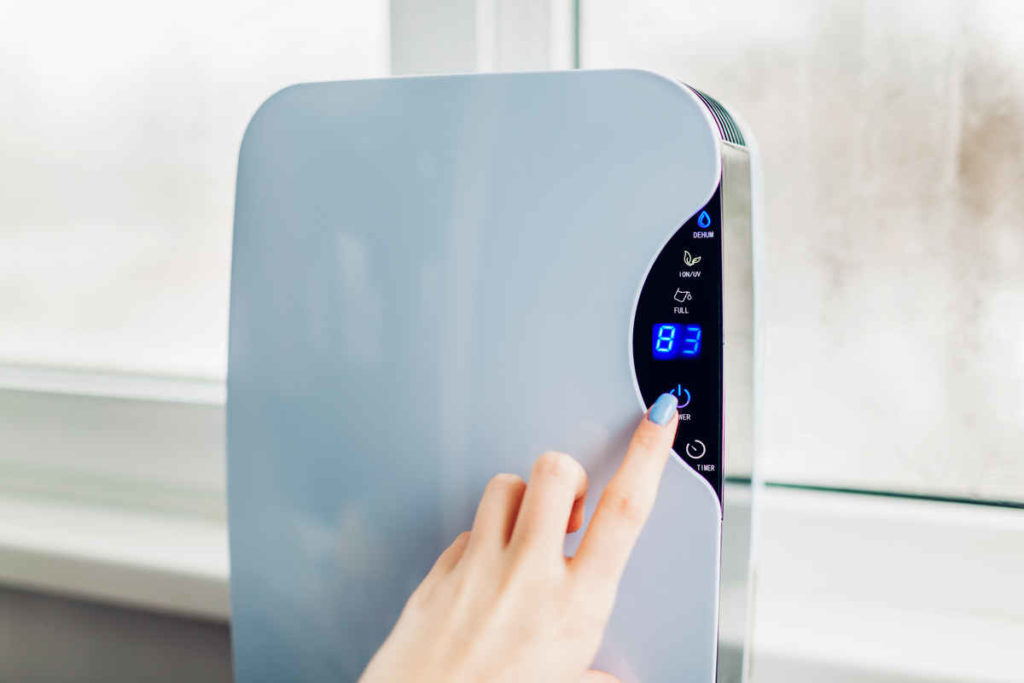

Dry climates and cold winter weather can cause dry skin and cracked lips. If left unchecked, these issues can only get worse, which is why many people are adding a decent humidifier to their home appliance list. Though warm mist humidifiers have their place, cool mist humidifiers are a more common choice since they don’t heat the water before sending it out of the machine’s nozzle. Instead, the moisture is cool, which makes these models a safer choice, especially in homes with small children.
When choosing a cool mist humidifier for your home, you may want to compare the evaporative vs ultrasonic humidifier models. Though they offer the same results by adding moisture to the air of your home, these types of humidifiers do so in different ways. This may have you favoring one over the other. If you’re not sure what the difference between ultrasonic and evaporative humidifiers, check out the following sections for more information.
If you’re trying to decide which of these humidifiers is the right one for your home, the first thing to do is learn how each of them works.
Evaporative humidifiers are the more traditional style when it comes to cool mist humidifiers. They have a simple operation that uses a combination of a tank of water and a fan. Though water will slowly evaporate on its own if left out, the fan in this cool mist humidifier speeds up this process. It draws air into the machine, passing it through a damp wick filter found near the base of the humidifier, and then pushes it out of the machine. This sends the moisture out into the air at a faster rate to add the necessary humidity to any room in your home or office.
The Aircare MA1201 Whole-House Console-Style Evaporative Humidifier is a good example when it comes to this type of humidifier unit. It is easy to clean, has a huge coverage area, and even has some great extras, like a digital humidistat and an auto-shutoff.
Ultrasonic humidifiers don’t use any fans, filters, or wicks to create the moisture needed to humidify your home. Instead, these models include 2 ceramic plates, which the machine vibrates at an extremely high frequency. When the water gets drawn through these types of humidifiers, it passes over the ceramic plates and vibrates along with it. This creates ultra-fine water droplets that are then sent into the air in the form of a mist.
One ultrasonic humidifier that you may want to check out is the PowerPure 5000 Warm & Cool Mist Ultrasonic Humidifier, which includes ceramic plates that can soften and clean the water that is sent out into the air for a healthier home.
Whether you buy an evaporative or an ultrasonic humidifier, there should be minimal maintenance to deal with. Both of these machines are quite simple to set up since you only need to add water to the tank and refill it again whenever it runs out. How often this is needed depends on the size of the machine’s tank and how often you have it running. You’ll also need to wipe both options down now and then to reduce mold and mildew.
The only difference in the maintenance of these two humidifier options has to do with the filters in the evaporative humidifiers. These will need to be changed a few times a year, though this is usually a simple process that takes only a minute or two of your time. The ultrasonic humidifiers don’t include any filters, so you’ll never have to deal with this if you have one of these models.
People often place their humidifiers in their bedrooms or living rooms, so a quiet model is needed so you can sleep, watch television, or talk with your family or friends without having a loud machine disrupting you.
Luckily, evaporative humidifiers are relatively quiet, though they aren’t silent by any means. The fan inside will create a bit of noise as it spins inside the machine. The higher the speed of the fan, the more noise it will create, so you may want to consider how quiet you need your home to be before choosing one of these models, especially if you can’t sleep with a regular fan in your bedroom.
An ultrasonic humidifier has no fan inside of it to create the mist needed to add moisture to the air. For this reason, these types of units create almost no noise, even with the vibrating ceramic plates inside. Of course, they aren’t completely silent, but you will never find a humidifier that makes no noise whatsoever. If you do want the quietest model possible, an ultrasonic humidifier is the best option, especially for light sleepers who need a bit of extra moisture in their bedroom air.
Though dehumidifiers are usually kept in basements or attics to reduce moisture, you usually need your humidifiers in the common areas of your home where everyone can see them. The size of these units and how they look will be important features to look into for this reason.
Evaporative humidifiers tend to be larger than other types since they include fans, filters, and larger tanks. Wick filters are especially bulky, so machines with these inside them will be larger models. Of course, they do come in various sizes, including the small portable models and large tower humidifiers, depending on the tank capacity and the coverage area. These models often have a more industrial look to them as well, though there are some more stylish designs available if this is something you’d prefer in a humidifier.
The ultrasonic humidifiers don’t have all of those extra parts inside of them. This lack of fans and filters means that these types of units aren’t usually as bulky as the evaporative models. They do still need the fillable tanks or other water storage areas but they still tend to be the more compact choice in cool mist humidifiers. Even the large coverage models tend to be a bit smaller than the evaporative units with the same features, so for limited space, the ultrasonic models may be a better choice.
These models are also a bit more stylish and decorative, with LED lights, nightlights, and other modern embellishments that make them a part of your room’s décor instead of an appliance you’d prefer to hide. They also tend to include USB power and aromatherapy, which most evaporative models don’t have, making them a more convenient choice as well as a prettier one.
Those on a budget will be concerned about how much a new cool mist humidifier costs before making their selection. Evaporative humidifiers have been around longer, so their price is quite reasonable for a new model. The downside is that these types of humidifiers also require replacement filters, which need to be replaced every 6 to 12 months, depending on the machine and how often you have it running. The more you use it, the faster the filters will wear out and the sooner they will need to be changed.
Ultrasonic humidifiers used to be quite expensive but over the years, their price has dropped significantly. They are still more expensive than the evaporative models, though, so you’ll be paying more for the initial purchase. The upside is that these machines don’t have those filters inside, so there is nothing to replace. What you spend on the machine when you first buy it is all you’ll be spending, with no hidden costs showing up down the line.
Both of these machines are designed to send moisture into the air. Of course, this doesn’t mean that they are equal in how this task is accomplished. The evaporative models create a mist or vapor that is sent out of the nozzle to humidify your home. This vapor is light, so it is distributed into the air and disappears, so you don’t even see it do its job.
Ultrasonic humidifiers may not be as effective in how they humidify your home. This is because the moisture sent into the air isn’t vapor or mist. Instead, these units create tiny water droplets, which are a bit heavier than what you’d get from the water vapor. This heavier moisture may drop, landing on the floor instead of staying in the air where it belongs. For this reason, you need to be extra careful where you put your ultrasonic humidifier.
A higher space, like a table or dresser, may be a better spot than leaving these models on the floor. Be sure to place them near the edge with the nozzle pointed away from the surface it is on to give the droplets more room to fall and evaporate in the process to avoid puddles to clean.
Homes with soft water won’t have to deal with mineral scale deposits but anyone that has hard water coming out of their faucets won’t have this luxury. Evaporative humidifiers have those handy filters inside that can handle whatever hard water throws at it, including those minerals. These get trapped in the filter along with the dust and dirt going through the machine, so the mist that is released into your home is clean and fresh.
Ultrasonic humidifiers don’t have such filters, so the mist that they disperse into the air may still contain those mineral scale deposits in the form of gray dust. This will be noticeable as the moisture comes out of the machine’s nozzle and even more so when the moisture evaporates and leaves that gray dust on the furniture around the humidifier.
Of course, there are ways to avoid this. You can use demineralized water in your ultrasonic model to keep the mist as clean and safe to breathe as possible. This will add to the cost of the machine, especially during those dry months when you’ll be running it more frequently to keep the air in your home from drying out.
The lifespan of both the ultrasonic and evaporative humidifiers is about the same. Both of these options should last for about 3 to 5 years, though this depends on how often you use it and how well taken care of the unit is. For the evaporative models, the filters need to be changed regularly to keep the machine working properly. Failing to do this can affect how well the humidifier can do its job, so you do need to change them out at the recommended times to prevent damage to the unit.
You should also consider the brand of the humidifier you’re buying, no matter what type it is. The bigger brands use higher quality parts than the small unknown companies, so their machines tend to last a bit longer. This also means that their humidifiers are a bit more costly but since you don’t have to buy a new one as often, you may be saving money in the long run.
You should also check out the warranty on these machines since this will cover you if there are any issues with your machine. This way, you aren’t replacing parts or the whole unit every year for problems with the parts or the manufacturing. This will ensure that your machine lasts as long as it is supposed to or that you’ll get a replacement one if the machine you purchased isn’t living up to your expectations.
There are a few different types of humidifiers on the market but the evaporative and ultrasonic cool mist models are quite popular for a few reasons. They are safe to use since they don’t use hot water, they are relatively quiet, and they come in a variety of shapes and sizes.
Of course, in the evaporative vs ultrasonic humidifier debate, many people may have a favorite. The evaporative ones have a lower initial cost, are quite effective, and don’t release those mineral scale deposits into the air as they work. Ultrasonic humidifiers don’t need any filters, come in more stylish options, and run almost silently. When choosing a model for your home, consider which of these features is most important and pick the model that meets your needs.





